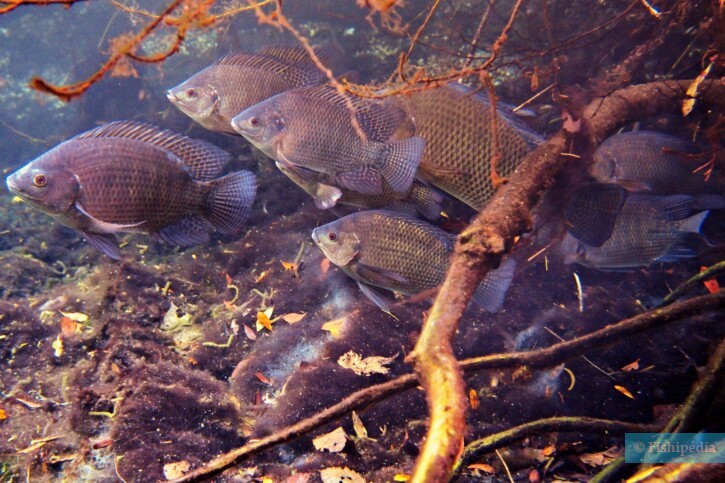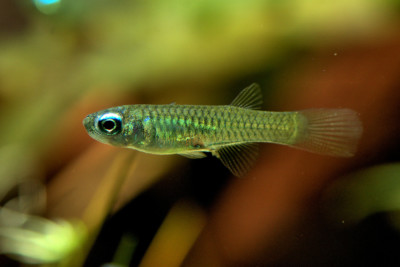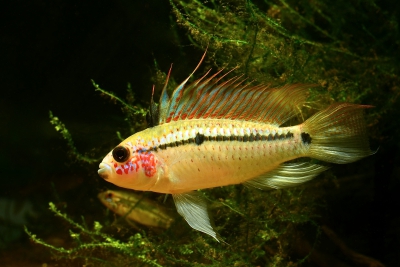blue tilapia
| Scientific name | Oreochromis aureus |
|---|---|
| Descriptor | Steindachner |
| Year of description | 1864 |
| IUCN category (World) | NE |
| Family | Cichlidae |
| Genus | Oreochromis |


Introduction
Oreochromis aureus, commonly known as blue tilapia, is a fresh water fish.
This sheet is currently being prepared. The texts currently proposed come from our data model or are being drafted. To request priority for this content, you can write to us HERE.
Who is it?
Morphology
-
Average size16 cm
-
Maximum size46 cm
-
Patterndrawn scales
-
Average size16 cm
-
Maximum size46 cm
-
Patterndrawn scales
How to recognize This fish ?
The blue tilapia measures around 16 cm. The dominant males can however reach 46 cm. This fish is bicolore with a predominantly rouge and gris body. The also has noir drawn scales.
Sexual dimorphism
The adult male is bigger than the female.
Behaviour & Life cycle
-
dietomnivorous
-
Sociabilityliving in shoals
-
territorialYes
-
Way of livingdiurnal
The blue tilapia hunts in the stalk and is one of the predators of its biotope. Opportunistic, it does not hesitate to attack any smaller animal nearby.
The blue tilapia is a fish living in shoals naturally found at mid-depth and near the bottom. The members of each group are organized around a well established hierarchy. This species is omnivorous .
The blue tilapia is a territorial animal that does not tolerate any incursions into its living area. It is particularly virulent against other territorial species and it can provoke heated fights. Relationships between conspecifics are also hectic, with each seeking to secure its place. Parrying or even sustained fighting can occur between dominant males.
Reproduction
-
Reproductionovipare incubateur buccal
The blue tilapia is a fish ovipare incubateur buccal. This fish protects its eggs from nearby predators.
Harmless species
This species does not represent any particular threats to humans when encountered in its natural environment.
Origin and distribution
What is its habitat?
Natural environment characteristics
-
Temperature8 - 30 °C
Biotope presentation
The acidification of water comes from the decomposition of plants. This phenomenon changes the color of the water, which tends to turn brown. In some areas particularly rich in organic matter, the water is so dark that it is called "black water".
The blue tilapia is most often found at a depth between 0m and 5m. However, it is not impossible to find this species at other depths. This animal evolves in areas characterized by a strong presence of vegetation (aquatic and marsh plants, decaying organic matter, roots...).
This species lives near large roots, in which it can find refuge in case of danger. This type of habitat is often found not far from the banks.
Species of the same biotope
To go further
Sources & Contributions
Participation & Validation
The Fishipedia team and specialist contributors are committed to providing high-quality content. However, although the information comes from scientific sources or testimonials from specialists, the cards may contain inaccuracies.

Adrien Falzon
Translation
Translation done with the valuable contribution of our translators, who make this information available to a wider audience. We sincerely thank them for their commitment.
Scientific partners
Tags
Species of the same family
Same genus
Species of the same biotope



























